Mattress in a box vs traditional mattress: which should you buy?
We've tested both mattresses in a box and traditional mattresses, here's how they compare in terms of delivery, price and comfort.
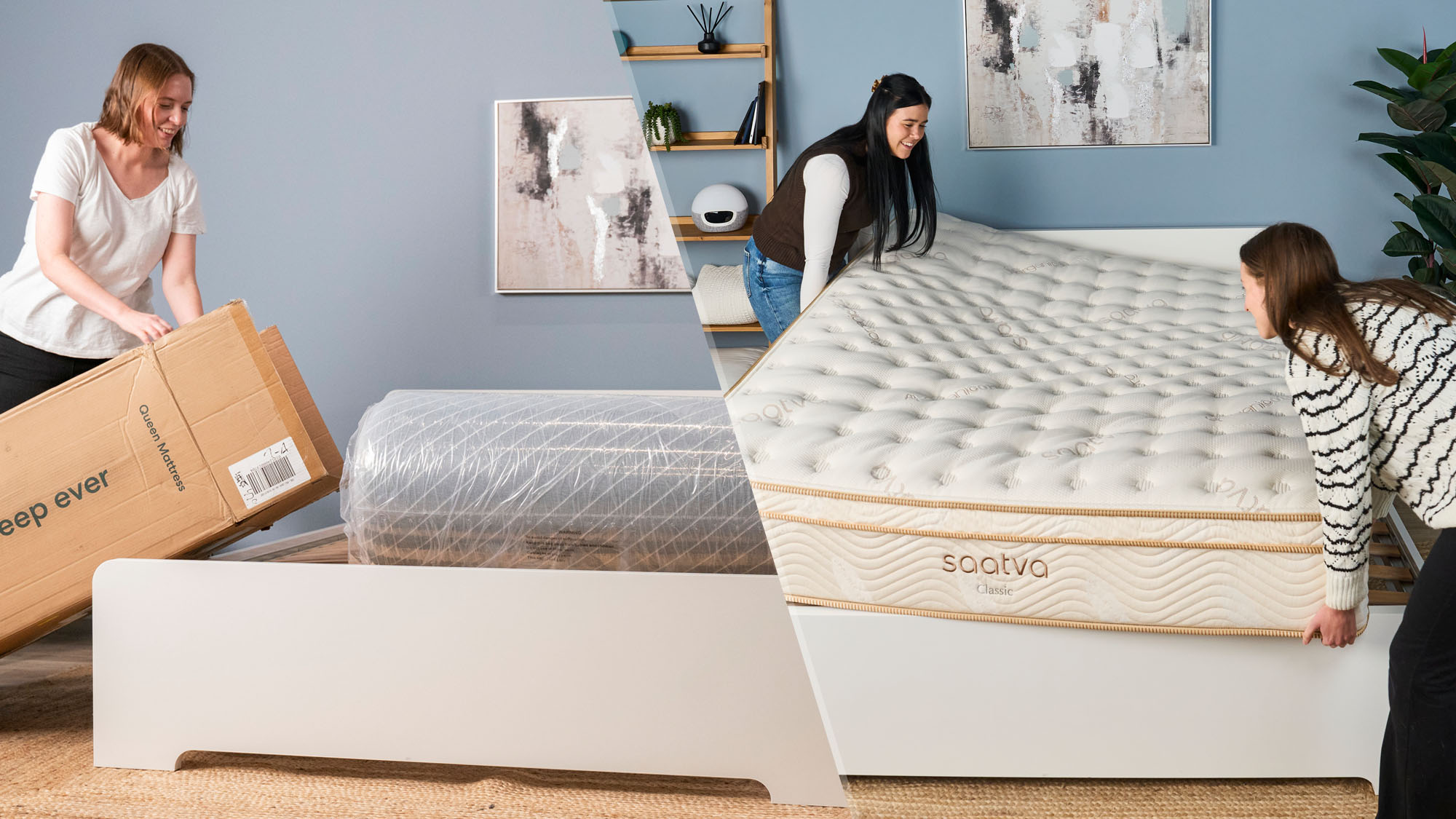
The boxed bed phenomenon revolutionized the mattress industry. While traditional mattresses were delivered flat and awkwardly maneuvered into place by a team of delivery people, today's best mattresses in a box are vacuum-packed, rolled, tucked into a box and sent to your door. But are there disadvantages to opting for a bed in a box model rather than a traditionally packed mattress?
We've tested boxed and traditional mattresses to put together our guide to this year's best mattresses, so our experienced sleep team are familiar with the ins and outs of both styles. We'll be honest: most of the difference is during delivery. By the time the mattress is on your bed frame, it won't really matter how it got to your house.
Tom's Guide spoke to representatives from traditional bed brand Saatva and boxed bed makers 3Z Brands, to find out how the two stack up. We'll be comparing and contrasting mattresses in a box vs traditional mattresses, to help you decide which one to buy.
Bed in a box vs traditional mattress: Price
- Cheap mattresses are often delivered in a box
- Luxury mattresses tend to come flat
- Both delivery options are available across price brackets
Mattresses in a box come in all prices, from queen sizes for less than $400 to ultra-luxurious designs that will set you back thousands. No matter your budget, you can find a mattress in a box to match. Similarly, traditional mattresses are available in a large price range, but if you shop online these tend to be premium beds.
You can find both traditional and rolled mattresses in our best memory foam mattress guide and our best hybrid mattress guide, so whichever you opt for, you'll have plenty of choice.
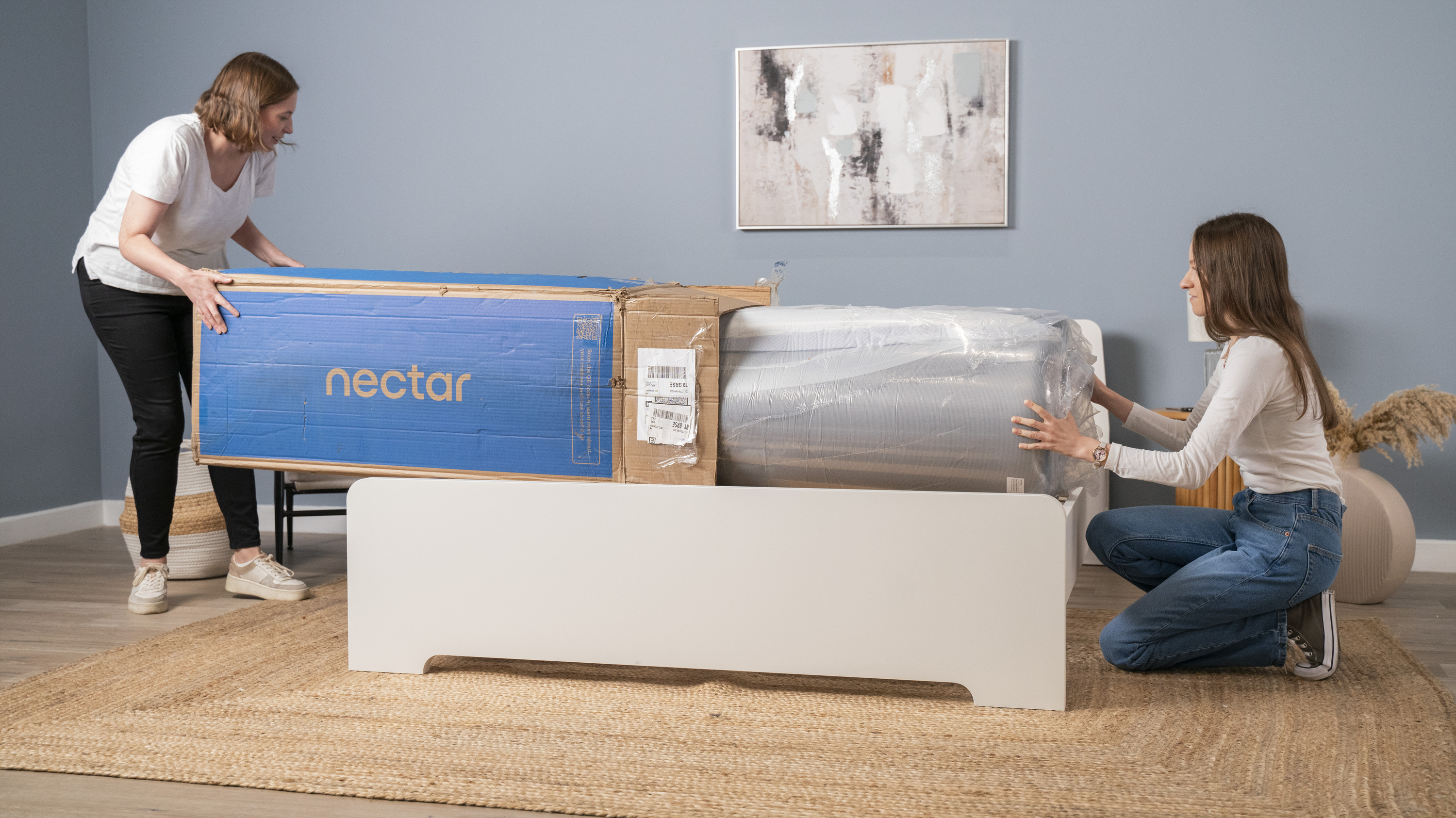
One advantage of the mattress in a box is the ease of shopping. Most online brands ship their mattresses in a box, meaning you can find your new sleep set-up from the comfort of your old bed — no dragging yourself to a mattress store. Traditional mattresses are also sold online, but you might not find the same diverse line-up.
However, shopping online does mean you miss trying the mattress before you buy. We highly recommend choosing a mattress with a sleep trial, which allows you to test the bed at home before you fully commit.
Bed in a box vs traditional mattress: Delivery
- Boxed mattresses are easier to move around corners and stairs
- ...and you might be able to do it by yourself
- Flat mattresses are hard to maneuver
The biggest difference between a mattress in a box and a traditional mattress is the delivery method, so let's dive right in. Mattress in a box are, unsurprisingly, delivered in a box. Traditional mattresses come to your door flat.
One major benefit of opting for a bed in a box is that it's far easier to get the mattress from your front door to your bedroom. Compressed into a convenient box, a roll-up mattress can be carried around corners and up stairs without constantly knocking things down.
Traditional mattresses (particularly the bigger queen and king sizes) are much harder to move. They're bulky and not particularly bendy, which makes small doorways and corners the enemy. Some luxury mattress brands offer white glove delivery, meaning the delivery team won't leave the mattress on your doorstep but will take it to your room of choice.
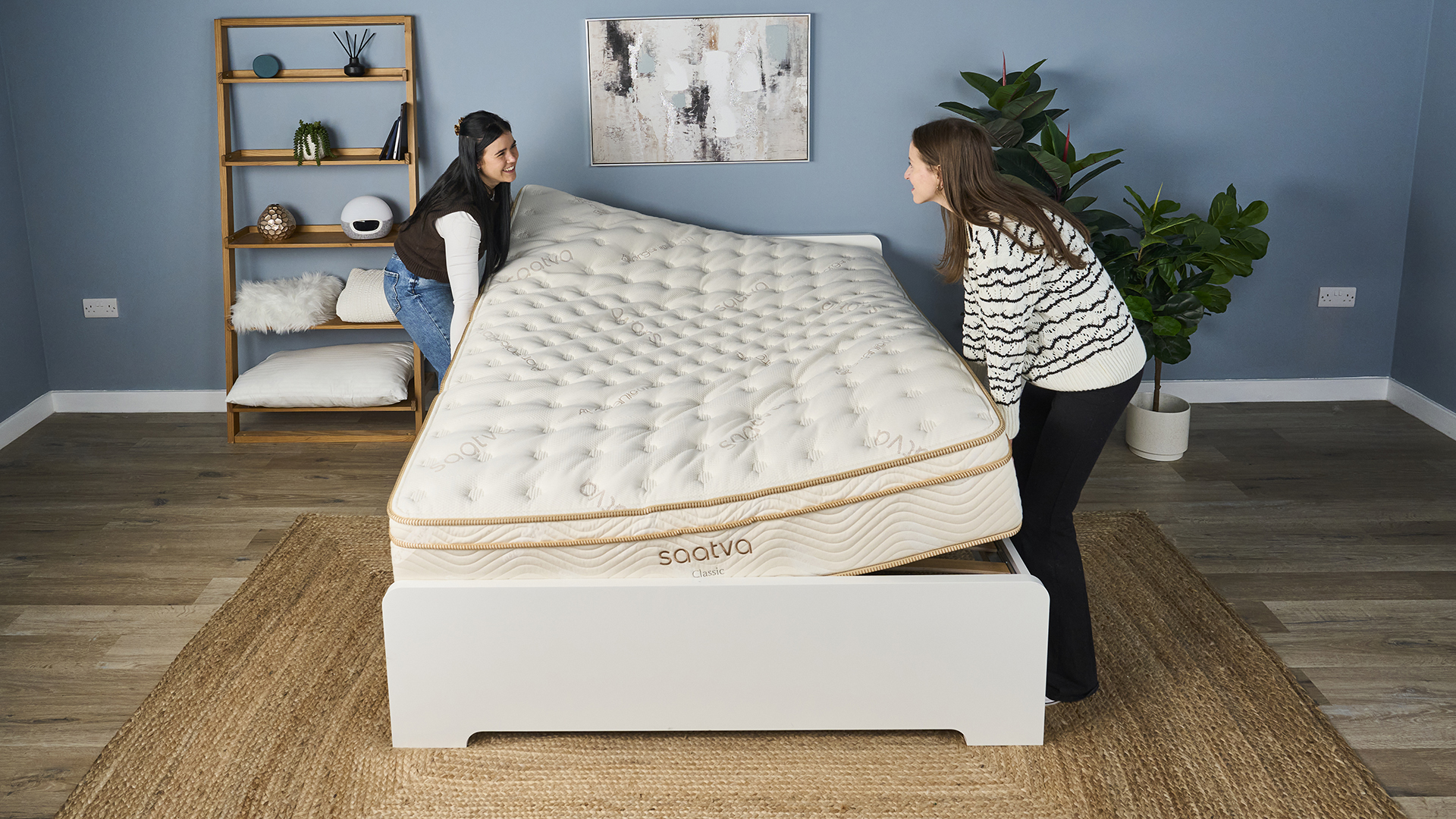
It's worth pointing out that even though your bed in a box mattress will be more compact than a flat-delivered one, it will not be lighter. Unless you're ultra-buff, getting it though the house will still, in many cases, be a two-person job.
As well as being easier to shift around your own home, it's easier to store and send mattresses if they're rolled and packed (although shipping times vary from brand to brand.) But be aware of super-fast delivery, as that might indicate your mattress has been sat in a warehouse for a while.
Traditional mattress shipping times can be slower, especially as you'll need to coordinate a delivery time with the brand. And your bedroom has to be ready to go when the mattress arrives: you'll want to get it on the bed frame right away.
Bed in a box vs traditional mattress: Set-up
- Mattresses in a box can be tricky to unpack
- They also need time to expand before you use them
- Traditional mattresses are ready to be slept on right away
Boxed mattresses might get to you quicker, but the set-up is often more complicated. Rolled mattresses have been vacuum-packed and sealed in plastic, which you have to cut away while taking care not to damage the mattress beneath. You also have to make sure the mattress is the right way up, and our testing team will attest that's a harder task than you think.
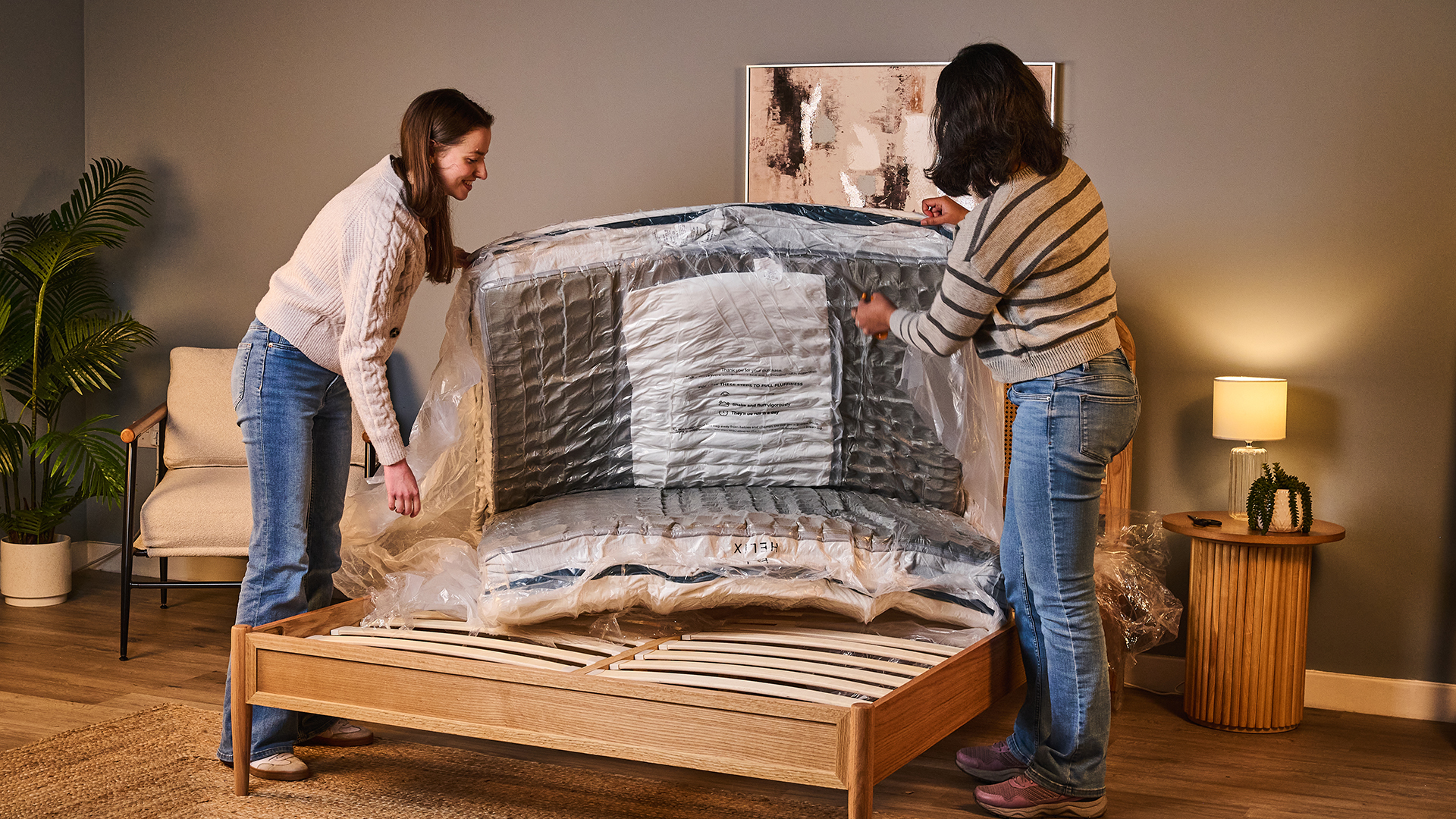
Once you've got the plastic off, a boxed mattress needs to decompress before being slept on. It can take anywhere from a couple of hours to several days for a mattress to expand properly. Also, be aware of off-gassing — this unappealing chemical smell is common in mattresses in a box.
Mattresses that are delivered flat can be slept on as quickly as you can get the bedsheets ready. And if you've opted for white glove delivery, the set-up is super easy: someone will do it for you. Otherwise, the hardest part of setting up a traditional mattress is lifting it onto the bed frame.
Bed in a box vs traditional mattress: Quality
- Cheaper mattress generally come in a box
- Traditional mattresses are often premium models
- But delivery method isn't a real indicator of quality
The short version is that the delivery method has little to do with the quality of your mattress — but there are some broad trends to be aware of. The majority of the best cheap mattresses are bed in a box models, as boxing a mattress allows you to cut down on storage and delivery costs (plus, these online brands save on brick and mortar mattress stores.) Traditional mattresses are more likely to fall into the premium price bracket, and some taller, luxurious mattresses aren't suitable for compression.
But when comparing quality, it's only fair to contrast mattresses within the same price bracket. Here, you'll find the delivery method has minimal impact. For example, the Helix Midnight Luxe (a boxed mattress) and the Saatva Classic (a traditional mattress) have both earned high praise from our review team.
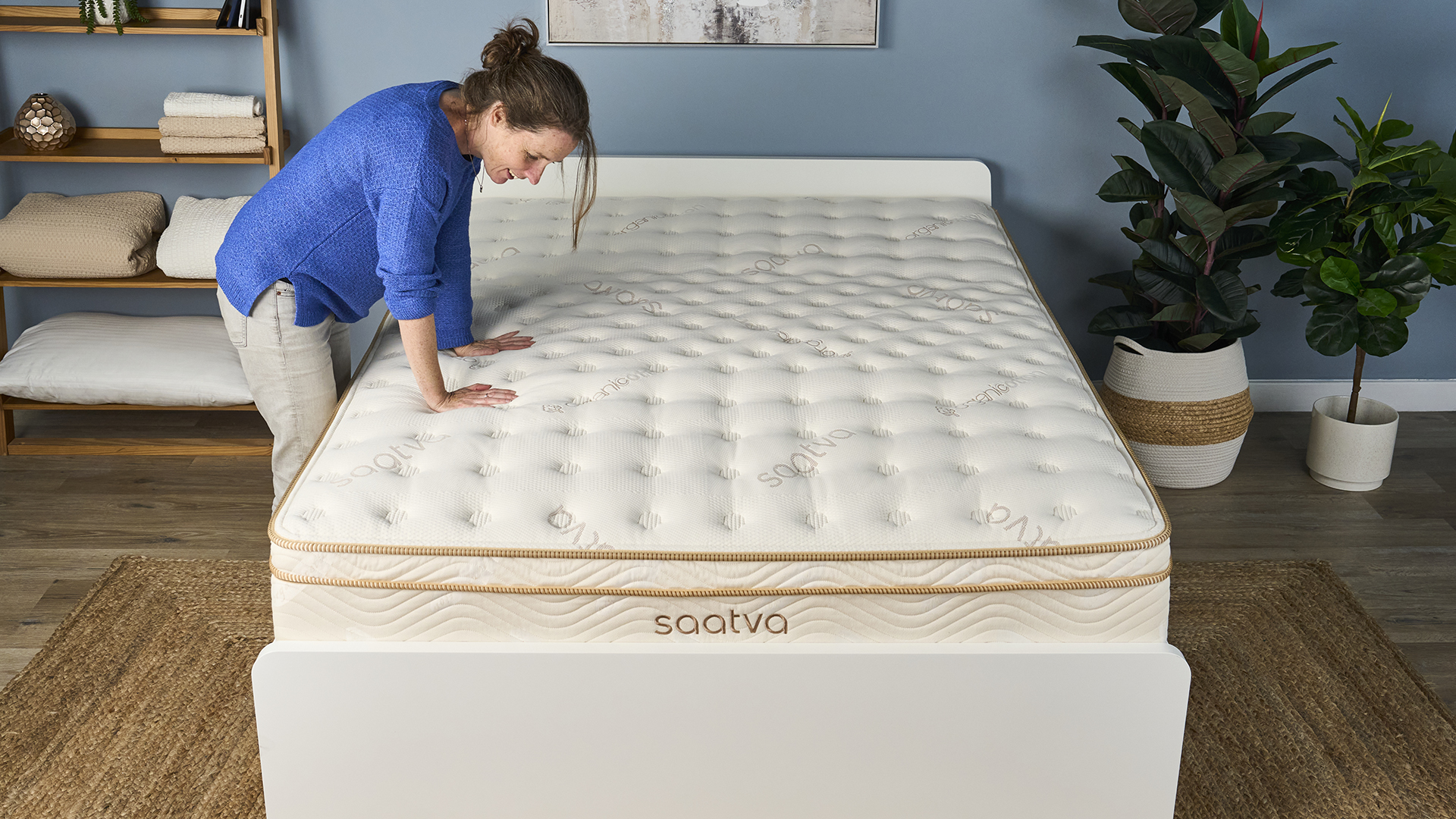
We spoke to Tim Dilworth, Chief Operating Officer at 3Z Brands (parent company of boxed mattresses such as Helix and Leesa) to find out more. Most of 3Z's brands are mid-range or premium, but Tim suggests that if you’re buying a cheap mattress, the fact that it comes in a box can actually be a sign of quality.
As Tim explains, cheap mattress makers can get away with using lower-quality materials if the mattress isn’t going through the rigor of compression. However, while the mattress might look good in a showroom, once home, it can start to show signs of wear quickly.
For a deeper dive into boxed mattress quality, check out our guide 'are bed in a box mattresses good?’
Bed in a box vs traditional mattress: Comfort
- Some traditional mattress makers argue compressing changes feel
- But mattress in a box brands insist it makes no difference
- Comfort and support are better linked to preference and quality
This is a contentious one, and the opinion will change depending on who you ask. Byron Golub, Vice President of Product & Merchandising at traditional brand Saatva, asserts “Compressed mattresses offer no added comfort benefits."
Byron argues that the process of compressing a mattress can compromise the materials, damaging the foams and destroying the coils along the fold line. "Our White Glove delivery… ensures that the mattresses' layers are delivered as they are designed/intended, fresh from the factory.”
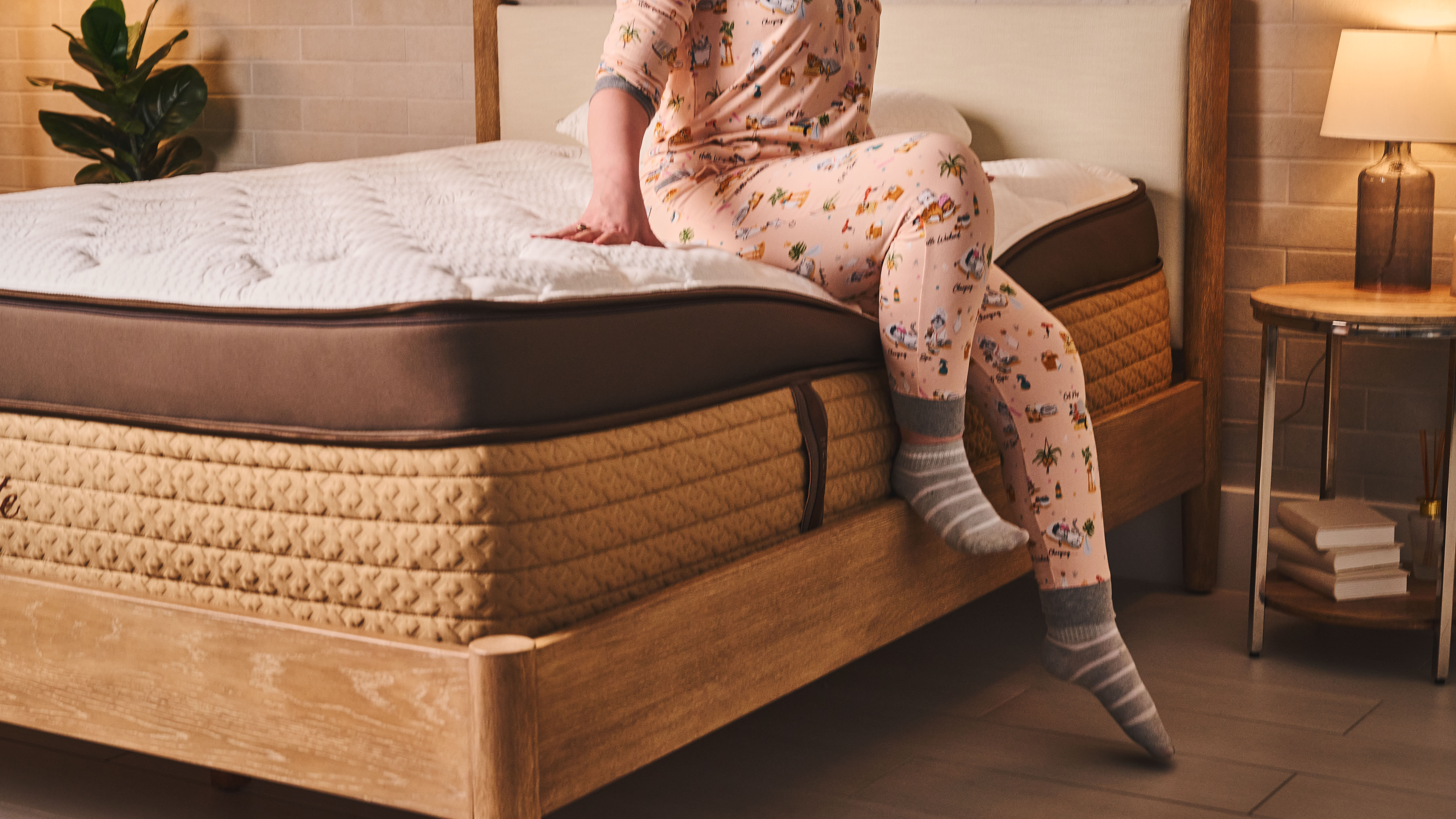
Tim argues the opposite: providing the mattress is made with decent quality materials, the compression process doesn’t damage the inside at all. “We actually use higher-quality materials in our mattresses that are able to better handle the compression process. Because we make our own foam and coils in-house, we’re able to ensure we’re building the most durable materials possible,” he explains.
However, performance can be impacted if a mattress is left compressed for long periods. Leaving the mattress in a box for several months can prevent it from fully expanding when it's eventually unwrapped, compromising both comfort and support. Good bed in a box brands won’t store their mattresses for long periods, to avoid this.
Bed in a box vs traditional mattress: Which should you buy?
Buy a mattress in a box if...
✅ You want an easy delivery process: It's much easier to get a mattress in a box upstairs, through doorways and round corners.
✅ You're looking to save money: While mattresses in a box aren't always cheap, most budget-friendly beds come in a box.
✅ You want to shop from your own home: Most mattresses sold online are delivered in a box, so you can pick your new bed while avoiding the crowds (and pushy sales people).
Buy a traditional mattress if...
✅ You're looking for something super luxurious: While you can get premium mattresses in a box, many luxury models are delivered flat.
✅ You don't want to wait to sleep on it: Whether you have nowhere else to sleep or find it hard to resist jumping on a fresh new mattress, traditional mattresses are ready to go as soon as they hit the bed frame.
✅ You want someone else to set your bed up: While you can occasionally choose white glove delivery for mattresses in a box, it's more commonly offered for traditional mattresses — but sometimes at a high price.
Sign up to get the BEST of Tom's Guide direct to your inbox.
Get instant access to breaking news, the hottest reviews, great deals and helpful tips.

Ruth is currently Homes Editor on Tom's Guide's sister site TechRadar, where she reviews and writes about everything from air fryers to vacuum cleaners to coffee machines, as well as the latest smart home gadgets. Prior to making the shift to Homes, Ruth was Tom's Guide's Sleep Editor. A certified Sleep Science Coach, she has tested more mattresses than her small flat can handle and will talk at length about them to anyone who shows even a passing interest.
- Ruth JonesSleep staff Writer
